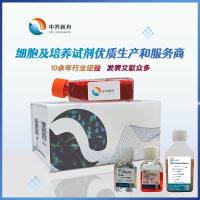Transformation of Electrocompetent E. coli with Blue/White selection
互联网
- Desalt DNA template by EtOH precipitation in NaOAc followed by at least 2x washes with 70% EtOH. Resuspend in 5 - 15 µL of sterile H2 O.
- Rinse cuvettes (if they have been used before) 5x with deionied H2 O, and place them on ice. This is sufficient to avoid background growth in most cases.
- Set a BioRad MicroPulser to "Ec1" for 1 mm cuvettes, or "Ec 2" for 2 mm cuvettes.
-
Electroporate the DNA into the bacteria:
- Add 5 µL of DNA to 50 µL of bacteria and mix by pipetting.
- Transfer bacteria/DNA mix to a cold cuvette, and immediately pulse in the electroporator.
- Quickly add 1 mL of r.t. L.B. to the bacteria in the cuvette. Use a sterile Pasteur pipette to transfer the suspension to a bacteria tube.
- Repeat for additional DNA samples and control DNA.
- Rotate at 37ºC x30 min. to allow the bacteria to recover.
-
Meanwhile plate LB/Amp plates with IPTG + X-gal if blue/white selection of colonies will be performed, as follows:
- Mix 100 µL X-gal + 20 µL of IPTG per plate.
- Spread X-gal/IPTG mix across surface of plate with a sterile glass spreader and a plate spinner.
- Allow the mix to infiltrate the media for 20 min.
- Perform two 10-fold serial dilutions of the LB/bacteria suspension into fresh sterile L.B. Concentrate the remaining bacteria by spinning 1 min. at 5k rpm in a sterile microcentrifuge tube, and then resuspend pellet in 0.1 mL of L.B.
- Plate 100 µL of the various concentrations of bacteria onto LB/Amp (+ X-gal/IPTG as necessary), and spread with a sterile spreader and plate spinner to evenly coat the plate. Record the DNA construct and the Bacteria Dilution Factor (9x, 1x, 1/10x, 1/100x) on each plate.
- Incubate the plates inverted at 37ºC o.n. They may need to be placed in a container if the humidity of the incubator is so low that it causes the agar to dry out.
- Remove the plates when the colonies are ~1mm in diameter. The color development on X-gal treated plates will continue to occur after the plates are removed from the incubator.
- Pick white colonies (also with no central blue coloration) and restreak on L.B./Amp plates to ensure that pure clones are obtained before performing plasmid preps.
- Store at 4ºC for at least 1 hr. (to firm up the agar) if colony hybridiation will be performed. Seal edges of plates with parafilm for storage up to 1 week.
-
Count the numbers of colonies on the plate with control DNA to determine the efficiency of competent cells:
- Efficiency (Transformants/µg) = colonies/plate x (Bacterial dilution factor) x 20,000
- Highly competent cells should have ~50 colonies on the plate with a 1/10 dilution of the control DNA's bacteria suspension.
Materials
-
Control DNA (e.g. pBS) diluted to 1 pg/µL in sterile H2 O, on ice.
Electrocompetent bacteria, frozen (50 - 100 µL aliquots), on ice.
BioRad cuvettes (1 mm gap), on ice.
Sterile L-Broth (L.B.)
Bacteria culture tubes -
P1000, P200, P20 Pipetman and sterile tips
Sterile Pasteur pipets and bulb.
37ºC incubator and rotating wheel
L.B./Amp bacterial culture plates (or other suitable selection media) -
X-gal 20 mg/mL in DMF (dimethlyformamide), store at -20ºC
IPTG 0.2 g/mL in H2 O, store at -20ºC









